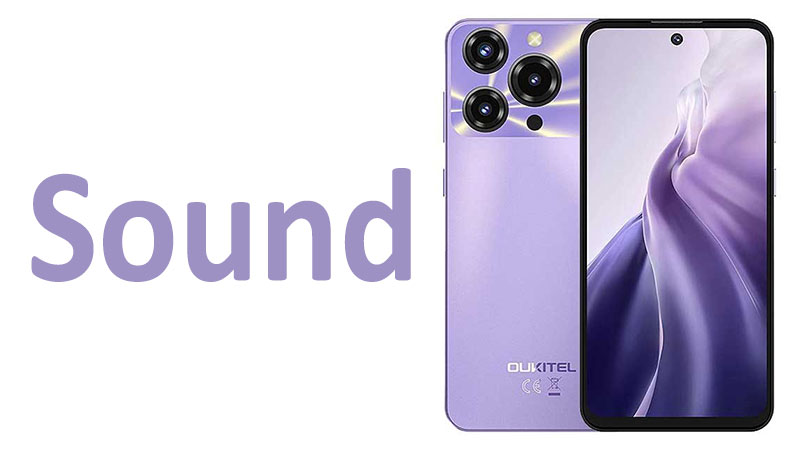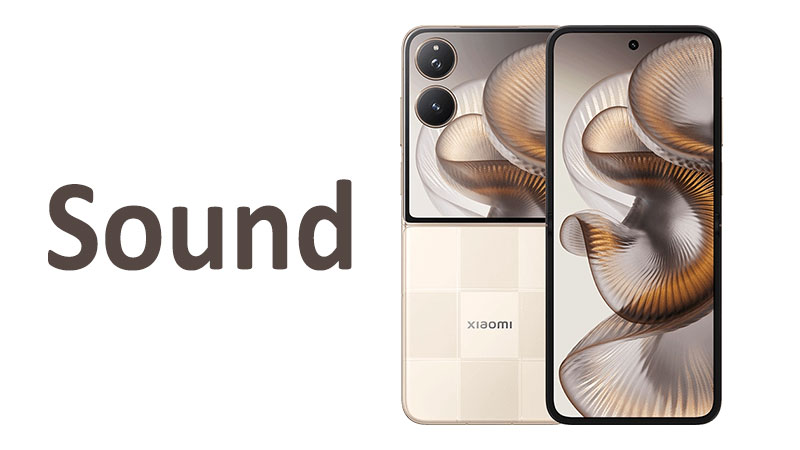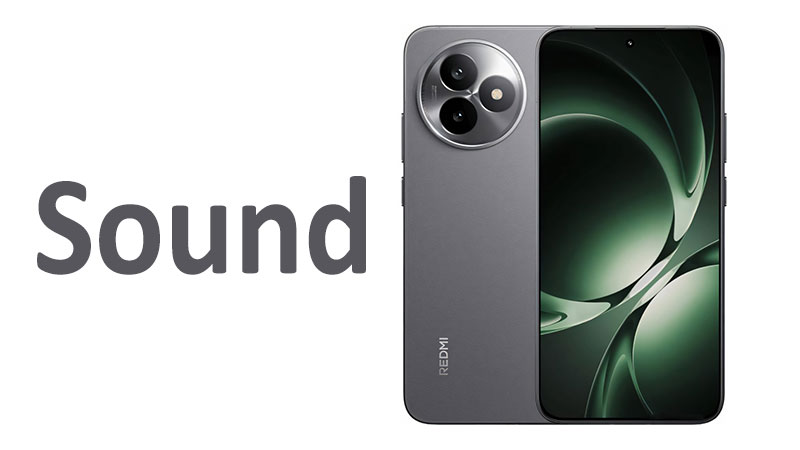The Oukitel C69 sound quality is a primary concern for budget smartphone buyers. Many users rely heavily on their phones for all daily media consumption. Excellent audio is thus a critical metric, even at the entry-level price point. This comprehensive review examines the entire Oukitel C69 sound system. We will analyze the built-in speaker, wired connectivity, and wireless performance. Understanding these details is crucial before making a final purchase decision. This analysis will set clear expectations for the C69’s audio capabilities.
Oukitel C69 Loudspeaker Performance: The Mono Reality
The Oukitel C69 employs a single, mono loudspeaker. This configuration is standard across the ultra-budget smartphone market. A single speaker offers a simpler, more cost-effective design. It focuses on functional loudness over high-fidelity immersion. The physical location of this single driver is also important for the user experience.
The Single Driver Configuration
Oukitel places the lone speaker driver on the bottom edge of the device. It typically fires downward towards the surface. This downward-firing placement is common but has clear drawbacks. Placing the phone on a soft surface, like a couch, can completely muffle the sound. This significantly impacts the listening volume and clarity. Users must remain conscious of the phone’s resting position.
The driver itself is physically small. Small drivers fundamentally limit acoustic performance. They struggle to move enough air to produce deep, resonant sound. Oukitel designs this component for maximum volume within its compact size. Engineers prioritize functional output for calls and notifications. They do not prioritize rich, multi-layered music reproduction.
Volume Output and Peak Loudness
The Oukitel C69 achieves a respectable peak loudness level. This is often a major selling point in the budget segment. High volume ensures users hear notifications in noisy environments. It also makes hands-free calling more viable. The phone provides adequate volume for watching short videos in a quiet room.
However, pushing the volume to its absolute maximum presents issues. Budget drivers often introduce noticeable distortion at the highest levels. The sound may become thin, harsh, or tinny. The C69 relies on basic digital signal processing (DSP) for volume control. This system may not fully prevent clipping at 100% volume. Users generally find the best clarity by keeping the volume slightly below maximum.
Tonal Balance and Clarity Profile
The C69 speaker is primarily tuned for the human voice. This design choice boosts the mid-range frequencies. This is where dialogue and phone calls reside. This tuning makes voice-centric content, like podcasts, sound clear and prominent. It is a smart, practical optimization for a budget device.
The bass response is minimal and lacks significant depth. Low-frequency tones feel light and airy, lacking any real punch. High-frequency treble notes have acceptable clarity. They may sound somewhat dull or lacking in sparkle compared to premium devices. Overall, the sound profile is focused and mid-range heavy. It is serviceable for daily tasks but not for critical music listening.
Specialized Comparison: Mono Versus Budget Stereo
Some slightly higher-priced budget competitors now offer stereo speakers. Stereo designs, even poor ones, offer better immersion than mono. They create a superior sense of space and separation. Mono rivals like the C69 sound flat in direct comparison. The C69 cannot replicate sound moving across the screen. This is a clear limitation for watching movies or playing games. The C69 offers function and loudness, but it sacrifices spatial realism.
The Missing Link: Analyzing the Lack of the 3.5mm Jack
The Oukitel C69 does not include a traditional 3.5mm headphone jack. This is a common feature omission, even in the entry-level market. This design choice significantly impacts how users connect wired headphones. It forces a complete reliance on the USB-C port or wireless methods.
The Trend in Budget Devices
The removal of the headphone jack serves several design goals. It frees up necessary internal space for other components. Engineers can then fit a larger battery or a slimmer device profile. It also simplifies the phone’s overall manufacturing complexity. Removing an external port can slightly improve basic dust and splash resistance. Oukitel implements this modern design choice for practical reasons.
USB-C Audio Dependence and Adapter Necessity
Wired audio now depends entirely on the phone’s single USB-C port. Users wishing to connect traditional 3.5mm headphones require an external adapter. This dongle converts the phone’s digital signal back into an analog sound wave. Therefore, the adapter contains the crucial Digital-to-Analog Converter (DAC).
The quality of the wired audio depends entirely on this adapter. Users must purchase a reliable, high-quality dongle separately. A cheap, generic adapter may introduce distracting static noise or weak volume output. This adds an extra, unforeseen cost to the total ownership experience. Buyers should factor in this extra accessory purchase.
Wired Audio Quality Assessment
The Oukitel C69 does not include a dedicated internal DAC chip for headphones. Instead, it relies on the adapter for all processing. The phone’s USB-C output is digitally clean and reliable. However, the final audio quality is variable. It changes based on the quality of the specific adapter used.
Good adapters can deliver excellent sound clarity and sufficient volume. Poor adapters may lead to disappointing, muddy audio. This uncertainty is a significant drawback for wired audio enthusiasts. Users lose the consistent quality provided by an integrated 3.5mm jack. This complexity is a key point for all potential buyers.
The Impact on Charger Port Longevity
The single USB-C port now serves three functions. It handles battery charging, data transfer, and all wired audio connections. This increases the frequency of plugging and unplugging cables. Frequent connection and disconnection increase physical wear and tear. This can potentially shorten the lifespan of the critical USB-C port. Users should handle the port carefully to ensure long-term reliability.
Wireless Connectivity: Bluetooth Essentials and Codecs
Wireless listening is the intended primary method for the Oukitel C69. The phone must offer reliable Bluetooth performance for audio streaming. It uses common, standardized wireless protocols for stability and compatibility. Understanding the codec support is important for evaluating wireless sound quality.
Core Bluetooth Standard and Stability
The Oukitel C69 utilizes the basic Bluetooth 4.2 or 5.0 standard. Bluetooth 5.0 is now widely adopted in the budget segment. It provides a stable and efficient connection for most wireless accessories. The range is generally adequate for basic daily use around the home or office. Connection dropouts are rare under normal operating conditions.
This stability is essential for casual listeners. The connection remains solid when the phone is in a pocket or backpack. Users can rely on uninterrupted audio playback during commutes or workouts. Bluetooth 5.0 is also more energy efficient than its predecessors. This helps conserve the battery life of both the phone and the connected headphones.
Codec Support: SBC and AAC
The Oukitel C69 supports the most common wireless audio codecs. It supports the required Subband Codec (SBC). SBC is the universal baseline for all Bluetooth audio devices. It is simple but uses high compression, reducing audio quality noticeably. Most music streaming will default to this codec.
The phone also likely supports the Advanced Audio Coding (AAC) codec. AAC is more efficient and offers better audio quality than SBC. Apple devices heavily use AAC, but it is available on Android phones. AAC provides a decent compromise between quality and compression. The C69 does not support high-resolution codecs like LDAC or aptX HD. This is a common limitation in the ultra-budget category.
Latency for Video and Gaming
Wireless audio always introduces a slight time delay, known as latency. Latency is the lag between the screen visual and the accompanying sound. Low latency is crucial for enjoyable video and gaming experiences. Budget phones often struggle to minimize this inherent delay.
The C69 may exhibit slight, noticeable lag during fast-paced games. Sound effects might trail the on-screen action marginally. This can affect the user’s reaction time in competitive titles. Latency is less of a concern for simple music listening or watching pre-buffered videos. However, users should manage their expectations for real-time mobile gaming.
Software Optimization and Internal Audio Tools
The Oukitel C69 runs on a standard version of the Android operating system. The built-in audio tools are generally limited but functional. Software optimization plays a role in managing volume and output consistency. Oukitel includes necessary basic controls for sound management.
Android System Audio Controls
The phone utilizes standard Android system audio processing. This includes a basic limiter to prevent speaker blowouts. It also manages audio routing between different devices. These system-level tools ensure compatibility and basic functionality. Oukitel does not typically include its own proprietary sound enhancements. The audio experience remains close to the standard Android framework.
Equalizer Settings and Customization
Users can typically find a basic equalizer (EQ) within the settings menu. This equalizer allows for simple adjustments to the tonal profile. It provides presets for genres like rock, pop, and classical music. Users can also manually adjust the bass and treble frequencies. This is a useful tool for correcting the speaker’s mid-range focus.
Adjusting the EQ can add perceived depth to the music. It helps overcome the mono speaker’s physical limitations. However, aggressive EQ adjustments may introduce more distortion. Users should apply these settings conservatively for the best results. The availability of this basic EQ allows for some personalization.
Microphone Quality for Communication
The audio quality review must include the microphone performance. The C69 uses a standard single or dual microphone array. This system is designed for simple, clear voice capture during calls. The microphone is sufficient for clear communication in quiet settings.
Performance degrades in noisy environments. The phone lacks advanced, multi-mic noise cancellation found in premium phones. Background noise can easily interfere with the user’s voice during calls. This makes the phone less ideal for taking business calls in loud public spaces. The microphone serves its basic function reliably, but nothing more.
Oukitel C69 Sound: Specialized Comparisons
Placing the Oukitel C69’s audio performance in context is important. We must compare its capabilities against its predecessor and current competitors. This comparison clarifies where the C69 successfully competes and where it falls short.
Versus Previous Oukitel Model (Oukitel C68 – Hypothetical)
A hypothetical Oukitel C68 model may have retained the 3.5mm headphone jack. This is the biggest functional difference between the two generations. The C69’s removal of the jack is a move toward modern, but less convenient, design. Users who own wired headphones may prefer the older C68 design.
The mono speaker driver likely saw minimal improvement between models. Oukitel might have slightly refined the speaker grille or acoustic chamber. However, the fundamental acoustic limitations remain unchanged. The C69’s major audio upgrade is likely centered on the more efficient Bluetooth 5.0 standard.
Against Budget Competitors
The C69’s mono speaker is competitive in its extreme budget class. Phones in this price bracket universally prioritize volume over clarity. Competitors from brands like Xiaomi and Samsung at the lowest tiers often use similar hardware. The C69 holds its own in terms of functional loudness.
However, the C69 is outmatched by slightly more expensive budget phones. Some rivals offer dual stereo speakers or advanced software tuning. These phones provide superior movie and gaming immersion. The C69 is best compared to other mono-speaker, no-jack devices. Its main advantage is its extreme cost-effectiveness.
Against Mid-Range Excellence (The Contrast)
Mid-range phones like the previous Oppo F31 offer a clear contrast. The F31 featured stereo speakers and high-fidelity codecs like LDAC. This highlights the C69’s inherent compromises. The C69 cannot offer the same rich bass or spatial separation. It also limits wireless audio to basic SBC and AAC codecs. This comparison confirms the C69 is strictly a functional audio device. It is not designed for the discerning audiophile.
Pros and Cons of the C69 Audio Experience
A balanced assessment of the C69’s audio requires outlining its strengths and weaknesses. The phone makes deliberate trade-offs to meet its price target.
Key Advantages for the Budget User
The Oukitel C69 offers practical, cost-effective audio benefits.
- High Functional Loudness: The speaker is loud enough for calls and notifications in public.
- Reliable Bluetooth 5.0: The wireless connection is stable and energy efficient.
- AAC Codec Support: This provides better quality than the baseline SBC codec for wireless listening.
- Clarity for Dialogue: The speaker tuning prioritizes clear and understandable human voices.
Disadvantages and Compromises
These trade-offs are necessary due to the phone’s low price point.
- Mono Speaker System: It completely lacks stereo immersion for videos and games.
- No 3.5mm Headphone Jack: Wired listening requires a mandatory, separate USB-C adapter purchase.
- Limited Fidelity: The bass is weak, and the overall sound lacks depth and richness.
- High Latency Risk: Wireless connections may exhibit noticeable audio lag during gaming.
- No High-Res Codecs: It does not support LDAC or aptX HD for true high-fidelity wireless music.
Essential Purchase Considerations for Buyers
Prospective buyers must approach the Oukitel C69 with realistic expectations. The phone delivers an audio experience appropriate for its ultra-budget category. This device is optimized for communication and functionality, not high-end entertainment.
Remember the Oukitel C69 sound is a compromise. If your primary use is watching movies or playing immersive games without headphones, you will feel the lack of stereo. You will be better served by a slightly more expensive phone with dual speakers. However, if you mainly use the phone for streaming podcasts or listening to music wirelessly, the C69 is perfectly adequate. The stable Bluetooth 5.0 and AAC codec support are sufficient for most casual listeners. Factor in the immediate cost of a good quality USB-C to 3.5mm adapter if you prefer wired headphones. A cheap adapter will severely limit your wired audio quality. The C69 is a practical tool, not a dedicated media hub.
Conclusion
The Oukitel C69 sound system provides a functional and reliable audio experience. The mono loudspeaker is loud enough for calls and basic media consumption. Its tonal profile prioritizes clear dialogue, which is excellent for communication. The phone’s wireless performance is solid, featuring reliable Bluetooth 5.0 and the necessary AAC codec. This allows for decent quality wireless music streaming.
The major limitation is the single mono speaker, which lacks stereo immersion. The absence of the 3.5mm headphone jack is also a key factor. It forces users to rely on digital adapters for wired audio. Ultimately, the C69 successfully meets the basic audio needs of the entry-level user. It is a highly practical device designed for functionality and affordability. Buyers who prioritize budget and basic audio communication will find the C69 a smart, sensible choice. Users seeking high-fidelity sound should consider devices in a higher price range.
Frequently Asked Questions (FAQ)
Is the Oukitel C69 speaker stereo or mono?
The Oukitel C69 uses a single, mono loudspeaker.
Can I use my wired headphones with the Oukitel C69?
Yes, but you must first purchase a separate USB-C to 3.5mm audio adapter.
Does the Oukitel C69 support any high-resolution audio codecs?
No, the phone only supports the standard Bluetooth codecs like SBC and AAC.
Is the Oukitel C69 loud enough for outdoor use?
Yes, the speaker achieves a high functional loudness level for notifications and calls in public.
How does the Oukitel C69 handle audio latency for gaming?
It may exhibit slight, noticeable wireless lag during competitive or fast-paced mobile gaming.



